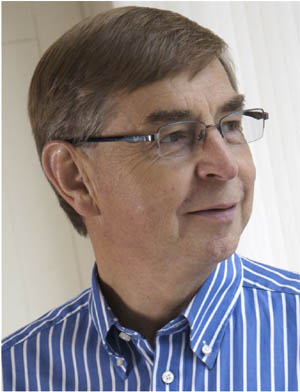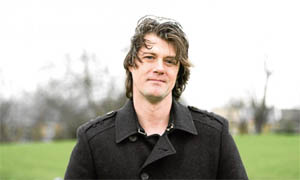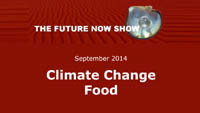
Content
Welcome to the Club of Amsterdam Journal.
The Future Now Show Special: Arjen Kamphuis still missing in Norway
Felix B Bopp, Founder & Chairman
Why Industry 4.0 ?

By Peter Cochrane, OBE
Professor of Sentient Systems @ The UoS Ipswich UK
Unlike many of our technological programs Industry 4.0 is progressing quietly in the back-ground with none of the noise and ballyhoo associated with the likes of 5G. However, the importance of ID4.0 is inversely proportional to the ballyhoo, and our future really does depend on this transformation being a big success as it is a vital step in the direction of realising sustainable societies. For sure, our feeble attempts at recycling and green energy are just a drop in the ocean and insignificant step change in the grand scheme of things. Recycling bins, solar panels and electric vehicle have a great feel good factor, but that’s where it stops, most of them cost more than they save! The big and necessary gains demanded by the planet can only be realised by the transformation of industries and supply chains based on the creation of the new and novel.
Merely polishing our existing technologies, processes and production facilities will not save us from the growing string of dire warning issued by the Club of Rome et al. since 1972. Despite understanding the ultimate cost of climate change and the denuding of planet earth of it’s raw materials at an alarming rate many individuals and nations choose to turn a blind eye to focus on personal wealth or the national interest. At the same time the human population continues to grow and we now consume over 1.5 planets worths of renewables every year. Food and water shortages invoked by climate change continue to promote wars and population migrations, and we can only expect worse if we do not find a solution.
“We have to stop producing more and more for the few and start supplying sufficient for the many”
At the core of these complex problems a prime solution focus occurs at the cusp of nano, bio, AI and robotics. It is here we will see the creation of new materials and processes that far exceed the performance of natural materials, and the amplification of limited human thinking, imagination and creativity. Most important of all is the ability to both recover materials for reuse whilst investing minimal energy for their manipulation and forming. The pulling of turbine blades from a single crystal, 3/4D printing of plastics, ceramics, and metals to create manifolds and other complex forms are now common examples. However, in the R&D labs engineers and scientists are striving to realise programmable materials using plastic and biological alternatives that can self repair, change colour, store energy and demonstrate a programmable shape on demand.
The key here is unprecedented strength to weight ratios and performance with minimal processing cost and maximal material recovery, but there are potentially even bigger gains in the logistic chain. It is not uncommon for components to traverse the planet several time from producer to assembly shops and then the final system integrator. The electronics, vehicle, domestic and office white and brown goods industries definitely sit firmly in this bracket. Now, if we were to move the material printing and programming families close to, or onto, the customer site, we would only have to ship materials in solid, powder and fluid form and thus drastically reduce the number of trucks, ships, planes and trains required. To exemplify this another notch: we are close to being able to produce flexible mobile and wearable devices in a similar way we deal with sheet paper and plastic: A battery layer, a screen layer, a transducer layer with hanging electronics bonding the whole almost like the reinforcing in concrete.
When we augment all this with vertical farms in cities and towns with food grown at the point of need, the dispersement of energy storage and supply, along with localised water sources and storage we will be far closer to real, than politically correct, sustainability. And how comfortably it all sits with the internet, IoT, BlockChain, GigEconomy, Publishing, eCommerce and Social Nets as part of a new dispersed economy.
Empower a Billion Lives

Introducing
IEEE Empower a Billion Lives
IEEE Empower a Billion Lives is a global competition aimed at fostering innovation to develop solutions to electricity access. Solutions are expected to be scalable, regionally relevant, holistic, and leverage 21st century technologies with exponentially declining prices.
Energy access is a global challenge
There are 3 billion people in the world living in energy poverty, and over 1 billion people without any access to electricity. So far, only 1.8 million people have gained tier 2 energy access by using off-grid electric services.
To address energy poverty, more of the same may not be the answer. New strategies are needed to scale energy access solutions 1000x.
Energy access means opportunity
Access to electricity is critical to health care delivery and to the overarching goal of universal health coverage. The WHO defines access to essential medicines and technologies as one of the key factors in ensuring universal health coverage. Most of these essential technologies require electricity, and without electricity, many health care interventions simply cannot be provided. Despite this, a study found that only 26% of health facilities in the Sub-Saharan Africa has access to reliable electricity.
A different type of competition
The IEEE Empower a Billion Lives competition is agnostic to energy sources, technologies, and business models. Solutions will be evaluated on both their technical innovation and business viability to rapidly and sustainably scale to one billion customers.
The competition is completely open to all, including student groups, small- and medium-sized companies, research labs, international corporations, and non-profit organizations.
The competition is organized by IEEE, an all-volunteer organization whose goal is to foster technological innovation and excellence for the benefit of humanity.
The Future Now Show
Shape the future now, where near-future impact counts and visions and strategies for preferred futures start. – Club of Amsterdam
Do we rise above global challenges? Or do we succumb to them? The Future Now Show explores how we can shape our future now – where near-future impact counts. We showcase strategies and solutions that create futures that work.
Every month we roam through current events, discoveries, and challenges – sparking discussion about the connection between today and the futures we’re making – and what we need, from strategy to vision – to make the best ones.
The Future Now Show Special
October 2018
Arjen Kamphuis still missing in Norway
For updates, please check the press.
Nordland Police District, Norway, 5 September 2018: “Arjen Kamphuis was last seen when he checked out of Scandic Bodø hotel on the 20. of August. Kamphuis has still not been found and the case is open for different outcomes, but still we have not found anything that indicates that a crime has been committed. A phone who is linked to Mr Kamphuis has been turned on for a short while in an area outside of Stavanger on the evening of the 30. of August, but the police have no confirmed information whether it is Mr Kamphuis himself whom are operating the phone.”
The Future Now Show
features

September 2014
Climate Change, Food, Social Revolution and …
Kirsten van Dam, Arjen Kamphuis, Hardy F. Schloer and Lise Voldeng
1.6 trillion litres of air cleaned so far.
Graviky Labs innovated first in the world technique to indentify particulate carbon as a recyclable waste and created several processes to make high-grade, AIR-INK. This enables the pollution to be recycled into new materials and not end up in other streams.
We have also developed KAALINK, a patent-pending end-of-pipe technology which captures ultra-fine carbon emissions from diesel exhaust and ambient pollution locations. The technology is still under development is open to licensing.
News about the Future
Bombardier Transportation Presents a New Battery-Operated Train and Sets Standards for Sustainable Mobility
The new battery-operated train is the first of its kind and was developed for Germany over the course of the past 60 years. It does not generate any exhaust and sets the standards for smart mobility with peak values of 90 percent in the areas of efficiency and recyclability. It is also around 50 percent quieter than modern diesel trains. According to a comparative study by the Technical University of Dresden, the battery-operated train clearly has an edge with respect to the total costs across the service life of 30 years.

Biodegradable Plastics
A new analysis from IHS Markit reports that the current market value of biodegradable plastics exceeds $1.1 billion in 2018 and could reach $1.7 billion by 2023. These plastics — known more precisely as biodegradable or compostable polymers — are bio-based or fossil-fuel-based chemical compositions that undergo microbial decomposition to carbon dioxide and water in industrial or municipal compost facilities. A few of these polymers have the capacity to decompose in backyard compost bins or in soil, freshwater, or saltwater.
Amputees feel as though their prosthesic limb belongs to their own body
by EPFL
In a breakthrough approach that combines virtual reality and artificial tactile sensations, two amputees feel as though their prosthetic hand belongs to their own body. Moreover, the scientists show that the phantom limb actually grows into their prosthetic han
Recommended Book

The Next Step: Exponential Life
by Aubrey de Grey
The Next Step: Exponential Life presents essays on the potential of what are known as – exponential technologies – those whose development is accelerating rapidly, such as robotics, artificial intelligence or industrial biology .considering their economic, social, environmental, ethical and even ontological implications. This book’s premise is that humanity is at the beginning of a technological revolution that is evolving at a much faster pace than earlier ones . a revolution is so far-reaching it is destined to generate transformations we can only begin to imagine. Contributors include Aubrey D.N.J. de Grey, Jonathan Rossiter, Joseph A. Paradiso, Kevin Warwick, Huma Shah, Ramon Lopez de Mantaras, Helen Papagiannis, Jay David Bolter, Maria Engberg, Robin Hanson, Stuart Russell, Darrell M. West, Francisco Gonzalez, Chris Skinner, Steven Monroe Lipkin, S. Matthew Liao, James Giordano, Luciano Floridi, Sean O Heigeartaigh and Martin Rees.
Sound & Architecture
Meyer Sound was a key collaborator for RESONATE: Thinking Sound and Space, a groundbreaking conference that brought together architects, acoustical engineers, sound artists, journalists, museum directors and students for a unique and wide-ranging exchange of ideas and inspiration. Focused exclusively on the role of sound in architectural space, the full-day program was co-organized by reSITE, a Prague-based nonprofit platform acting to improve the urban environment, and MAAT (Museum of Art, Architecture and Technology) in Lisbon, Portugal that hosted the event.
Foster & Partners, Meyer Sound: Sound as Invisible Architecture | RESONATE
The GRI Standards
The GRI Standards are the first global standards for sustainability reporting. They feature a modular, interrelated structure, and represent the global best practice for reporting on a range of economic, environmental and social impacts.
Futurist Portrait: Mark Stevenson

Reluctant Futurist’ Mark Stevenson is an author, broadcaster and expert on global trends and innovation.Mark is a London-based British author, businessman, public speaker and futurologist, as well as a former semi-professional musician and comedian. He is founder of Flow Associates, a cultural learning agency and the cultural change practice We Do Things Differently. He is also a Fellow of the Royal Society for the encouragement of Arts, Manufactures and Commerce. Stevenson’s first book, An Optimist’s Tour of the Future, was released in the United Kingdom in January 2011 (February 2011 in the United States). His second, We Do Things Differently followed on 5th January 2017
Mark: “I’m not saying the future will be better … but there’s everything to play for.”
When unexpectedly confronted with his own mortality, Mark Stevenson – a writer, deep-thinker, and stand-up comedian – began to ponder what the future holds for our species.
Stevenson set out simply, asking, “What’s next?” and then traveled the globe in pursuit of the answers.
His voyage of discovery took him to Oxford to meet Transhumanists (they intend to live forever), to Boston where he confronted a robot with mood swings, to an underwater cabinet meeting in the Indian Ocean, and Australia to question the Outback’s smartest farmer. He clambered around space planes in the Mojave desert, got to grips with the potential of nanotechnology, delved deep into the possibilities of biotech, saw an energy renaissance on a printer, a revolution in communications, had his genome profiled, glimpsed the next stage of human evolution … and tried to make sense of what’s in store.
A meticulous researcher, Stevenson sifts the genuine concerns about new technologies from fear-mongering – offering up a balanced take on everything from nanotech ‘grey goo’ to worries about population and resource crises, pandemics, climate change and new forms of terrorism. “I’m not saying the future will be better,” he says “but I do know there’s everything to play for.”






Customer Reviews
Thanks for submitting your comment!